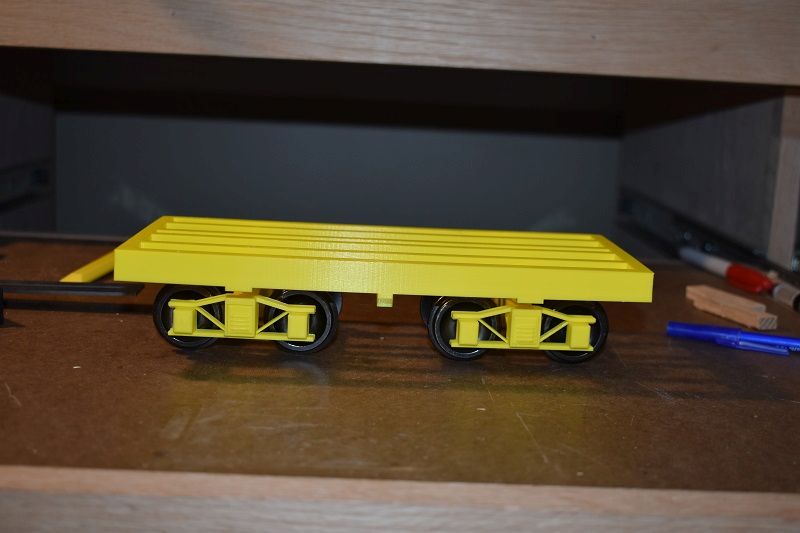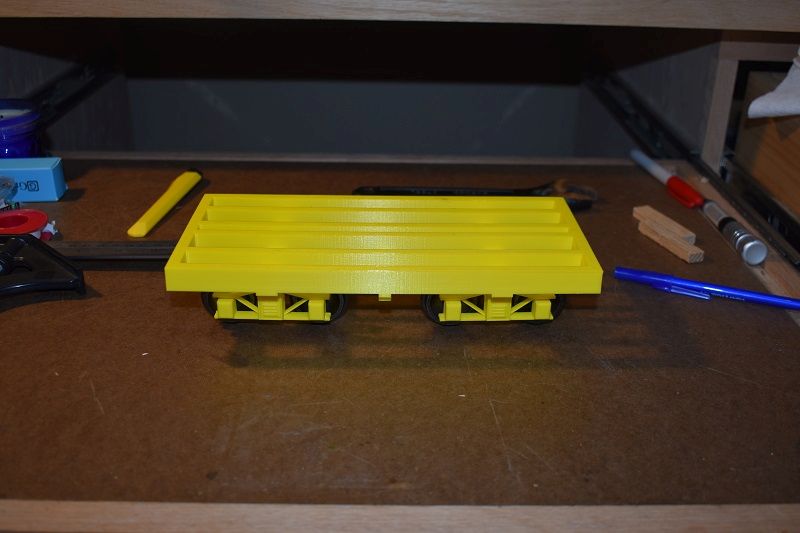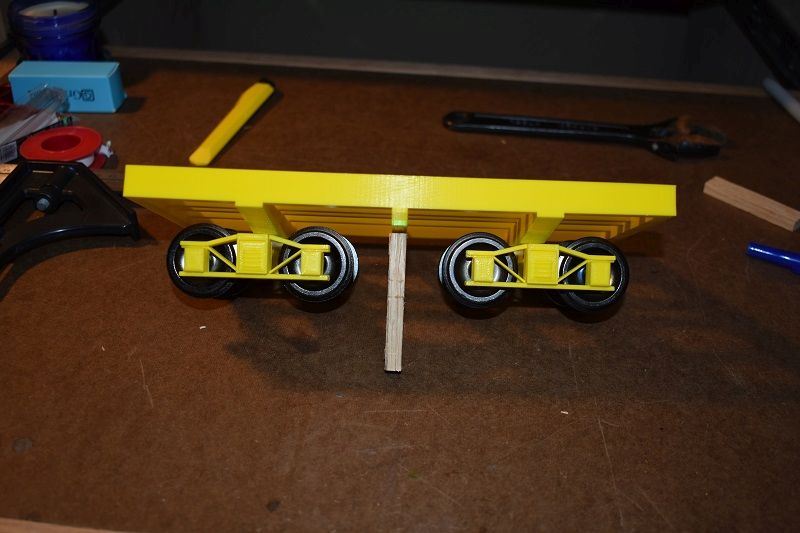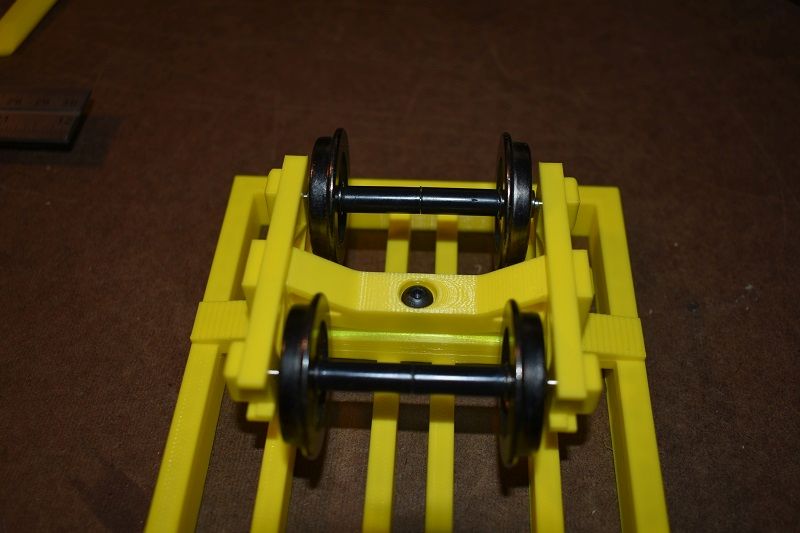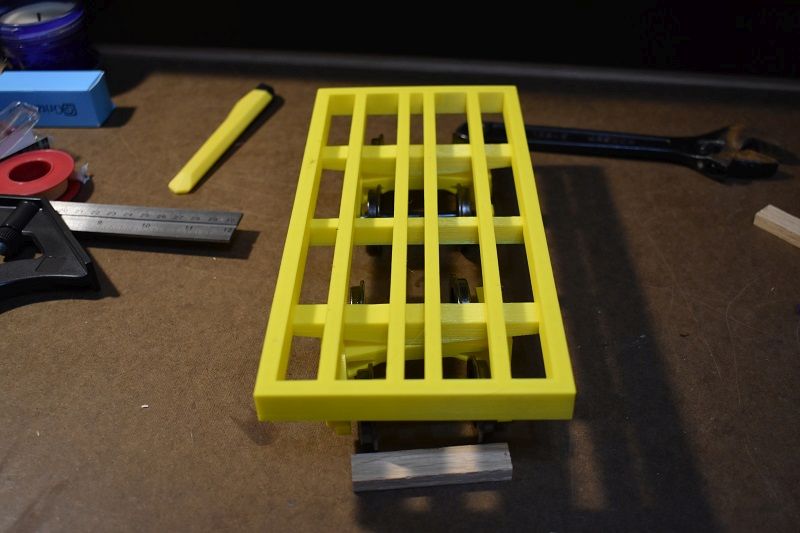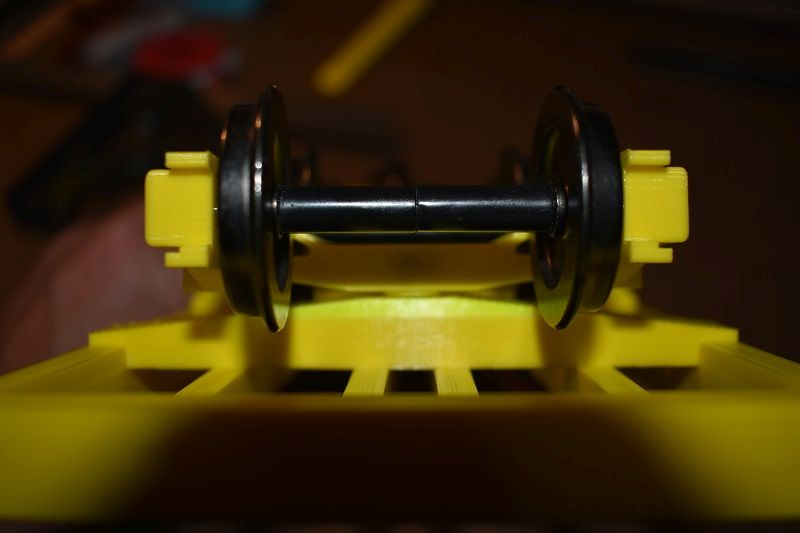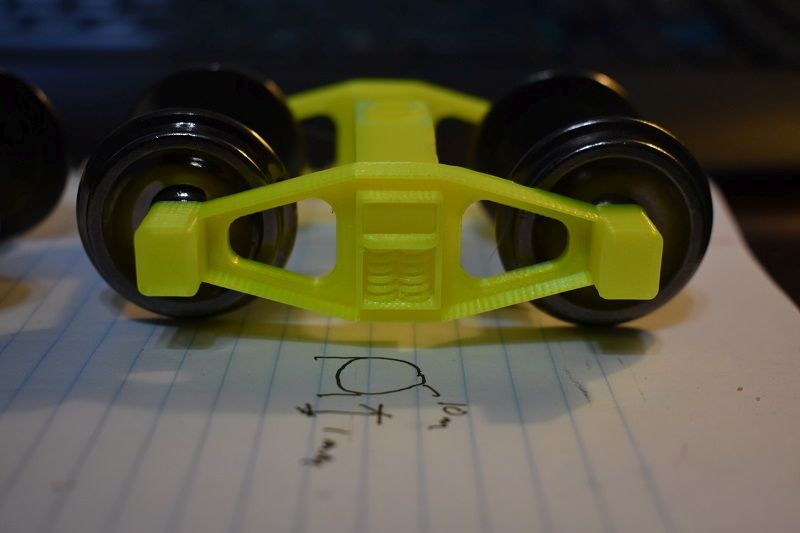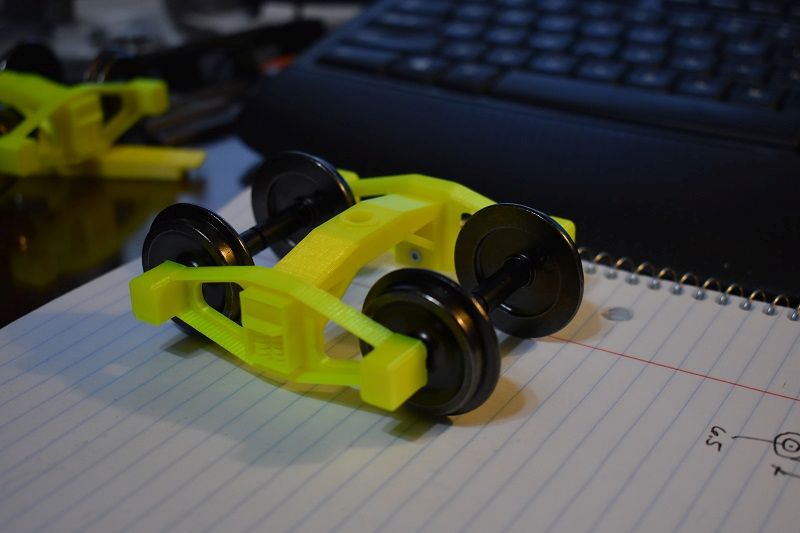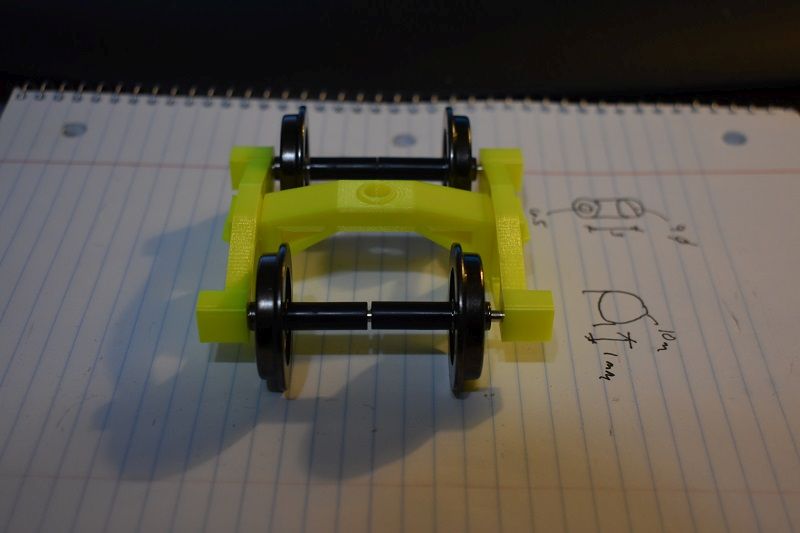Al, PETG’s properties are similar to ABS but it is much easier to print with because it has much better adhesion to the print bed, too much sometime. The drawback is it is stringy and small details don’t look very good. But, it can handle higher temps. I’m not sure what my plan is right now with the trucks. It started out as a challenge to myself to simply replicate a set of archbar trucks but now that I’ve printed a set, I see a lot of flexibility by printing my own, both with the trucks and the bolsters and also the connections to the car. I may be interested in casting once I get a final product, but I’m not there yet. I will certainly get in touch if I decide to go down that road. Thanks for the offer to help, cause I wouldn’t know where to start.
Sean, I think John hit the nail on the head (http://www.largescalecentral.com/externals/tinymce/plugins/emoticons/img/smiley-surprised.gif). I am dreading fooling with the insulation. And I do like the engineering as much or more than I do the building. That is probably why I haven’t started on the layout. I can’t get past the engineering, but that is ok too cause I’m having fun.
John, you would be correct … see above.
Joe, I believe the PLA will work just fine and even if it fails for whatever reason that’s ok. We have repair shops on the layout for a reason and we can either print another set or just have spares available. I have solved the equalization issue with my latest bolster and connection design. It gives 5-8mm of movement. I am using a Prusa printer. I originally bought the MK2s and have recently upgraded it to the MK2.5. I have no issues with it. I find it easy to keep tuned and get quality prints. I do wish it was bigger. I’ll be glad to share the stl files with you. I am currently away from home … I’m actually in Florida this evening and tomorrow attending the Duke vs FSU basketball game . … I’ll touch base when I return home and shoot the files to you. I would welcome any feedback.
Eric, I have some ProPLA filament from a different manufacturer but I have not used it yet. Well, check that … now that I think about it, what I have may be PLAPro. Not sure. I’ll look at it when I get home. I’ll have to try it out and see how I like it. I’ve never tried annealing but I may have to give that a go too. What printer are you using?
